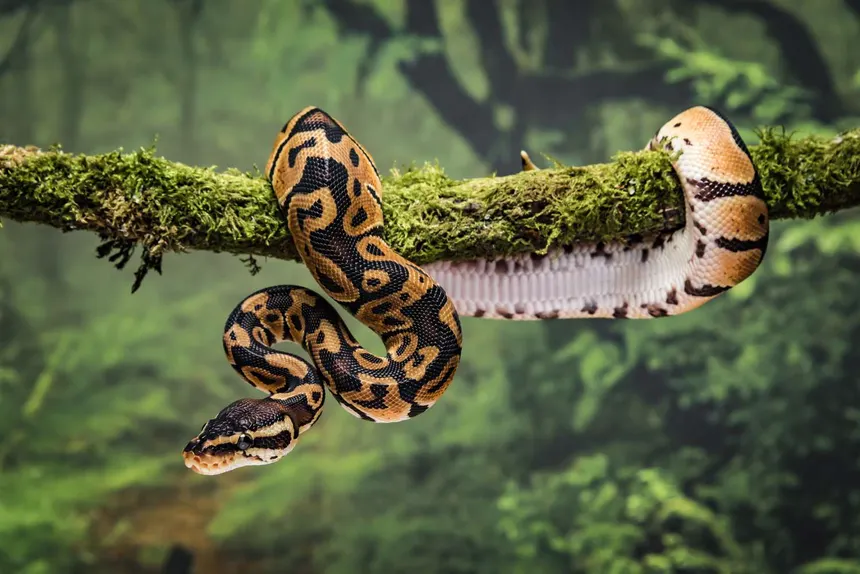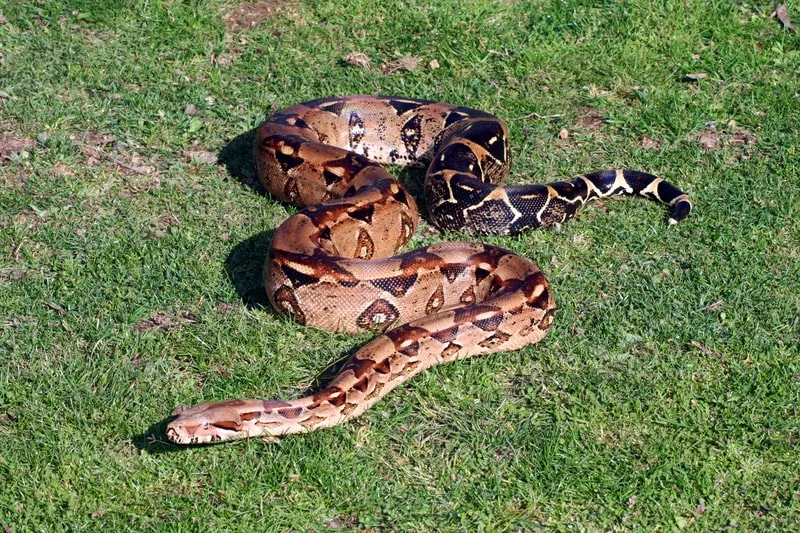“20 Fascinating Facts About Snakes: Nature’s Silent Hunters”

Snakes have captivated humans for centuries—feared, worshipped, misunderstood, and studied. Found on nearly every continent except Antarctica, these legless reptiles play essential roles in ecosystems as both predators and prey. With over 3,700 species, their diversity is astounding.
Here are 20 interesting facts about snakes that reveal just how strange, incredible, and important these creatures are.
1. Snakes Don’t Have Eyelids
Instead of eyelids, snakes have a clear scale called a spectacle that protects their eyes. This layer is shed during molting, giving them a “glassy-eyed” look just before shedding.
2. They Smell With Their Tongues
Snakes use their forked tongues to collect scent particles from the air, which are then interpreted by the Jacobson’s organ in the roof of their mouths.
3. Some Snakes Have Heat Vision
Pit vipers, pythons, and boas have heat-sensing pits that allow them to detect warm-blooded prey even in complete darkness.
4. Snakes Can Be Venomous or Constricting
While venomous snakes inject toxins to immobilize prey, constrictors like boas and pythons suffocate prey by coiling around them.
5. Snakes Don’t Chew—They Swallow Whole
Thanks to their highly flexible jaws, snakes can swallow prey much larger than their heads by unhinging their lower jaws.
6. They Have No External Ears
Snakes hear through vibrations transmitted from the ground to their jawbones and inner ear structures.
7. Some Snakes Can Fly (Sort Of)
Flying snakes like the Chrysopelea genus in Southeast Asia can glide through the air, flattening their bodies and steering with precise movement.
8. The Longest Snake Ever
The reticulated python holds the title for the longest snake, with individuals reaching over 30 feet (9 meters) in length.
9. The Smallest Snake
The Barbados threadsnake is the world’s smallest, measuring just 4 inches (10 cm) long—about the size of a spaghetti noodle.
10. Venom Has Medical Uses
Snake venom is being researched for treatments of blood pressure, strokes, cancer, and chronic pain.
11. Not All Snakes Lay Eggs
Some snakes, like boa constrictors and garter snakes, give live birth, while most others lay eggs.

12. Shedding Is Essential
Snakes shed their skin periodically in a process called ecdysis to grow and remove parasites. A healthy snake will shed its skin in one piece.
13. They’re Found on Every Continent Except Antarctica
Snakes are incredibly adaptable and can be found in rainforests, deserts, oceans, and even urban areas—everywhere but freezing Antarctica.
14. Sea Snakes Are Real and Highly Venomous
Sea snakes live in warm coastal waters and have extremely potent venom, but they’re generally non-aggressive toward humans.
15. Snake Scales Serve Multiple Purposes
Scales protect their bodies, aid in movement, and reduce water loss. Belly scales help snakes grip surfaces and climb.
16. King Cobra Isn’t a “True” Cobra
Despite the name, the King Cobra belongs to its own genus (Ophiophagus) and is famous for feeding almost exclusively on other snakes.
17. They Can Go Months Without Food
Some snakes can survive weeks or even months without eating due to their slow metabolism—especially after a large meal.
18. Some Snakes Play Dead
The hognose snake dramatically plays dead, flipping onto its back, letting its tongue hang out, and releasing a foul smell to deter predators.
19. Snakes Are Cold-Blooded
As ectotherms, snakes rely on external heat sources to regulate their body temperature. That’s why they bask in the sun or hide to stay cool.
20. They’re Vital to Ecosystems
Snakes help control populations of rodents and insects, keeping ecosystems balanced. Without them, disease and crop damage could rise dramatically.

Conclusion: More Than Just Scales and Slither
Though often feared, snakes are diverse, intelligent, and ecologically essential creatures. Whether they’re gliding through trees, swimming in oceans, or lurking in desert sands, snakes are among nature’s most efficient and fascinating predators.



